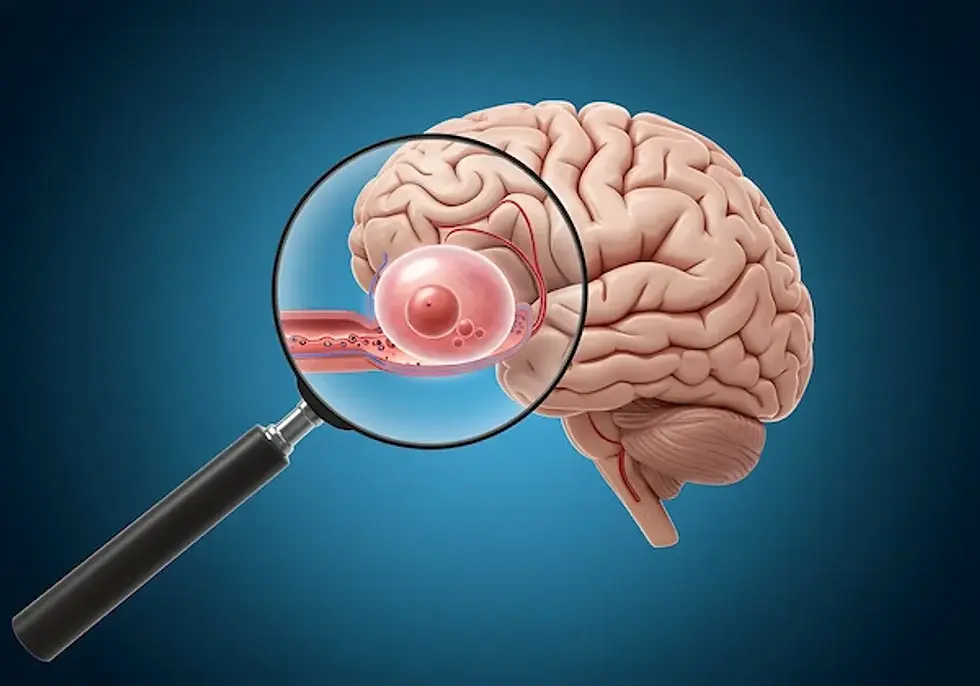Brain Aneurysm: The Silent Threat and the "Worst Headache of Your Life
- Yashprabha Neuro Hospital

- Nov 18
- 3 min read

A Vascular Weakness in the Brain
A brain aneurysm is a weak, bulging spot on the wall of an artery in the brain. As blood flows through the artery, this weak spot balloons out and fills with blood, often resembling a berry hanging on a stem. Many aneurysms are small and produce no symptoms, remaining undetected for a person's entire life. The profound danger arises when the thin wall of an aneurysm leaks or ruptures, causing bleeding into the space surrounding the brain. This event, known as a subarachnoid hemorrhage, is a life-threatening type of stroke that requires immediate, expert medical intervention.
As a premier center for advanced neurosurgery, YP Neuro Hospital is equipped with the high level expertise and technology to treat both ruptured and unruptured brain aneurysms.
The Alarming Symptom of a Ruptured Aneurysm: The "Thunderclap Headache"
While a small, unruptured aneurysm is typically silent, a ruptured aneurysm produces sudden, dramatic, and unmistakable symptoms. The absolute hallmark sign is:
A Sudden, Excruciating Headache: This is universally described by patients as "the worst headache of my life." It is a "thunderclap headache," meaning it strikes with maximum intensity in an instant, unlike a typical migraine that builds over time.
This headache is a medical emergency of the highest order and is often accompanied by other acute symptoms:
- Nausea and violent vomiting
- A severely stiff neck
- Blurred or double vision
- Extreme sensitivity to light (photophobia)
- A seizure
- Loss of consciousness or sudden collapse
If you or someone you know experiences a headache this sudden and severe, it should be treated with the same urgency as a heart attack. This is a life-or-death situation requiring immediate transport to an advanced emergency room.
Risk Factors and Diagnosis
Certain factors can weaken artery walls and increase your risk of developing or rupturing an aneurysm. These include:
Hypertension (High Blood Pressure): Uncontrolled high blood pressure is the single biggest risk factor. Smoking: The chemicals in cigarette smoke damage blood vessel walls.
Family History: Having a first-degree relative with an aneurysm significantly increases your risk.
Age: Most are diagnosed in people over 40.
Diagnosis is made using advanced neuroimaging that visualizes the blood vessels in the brain. This includes a CT scan, a CTA (CT Angiography), or an MRA (Magnetic Resonance Angiography). If a rupture is suspected, a lumbar puncture (spinal tap) may also be performed to check for blood in the cerebrospinal fluid
Advanced Neurosurgical Treatment: Securing the Aneurysm
The primary goal of treatment is to seal off the aneurysm to prevent it from bleeding or re bleeding. At YP Neuro Hospital, our neurosurgeons are highly skilled in the latest, highly technical procedures:
Surgical Clipping: This is an open neurosurgical procedure. The surgeon removes a small section of the skull to access the aneurysm and places a tiny, powerful metal clip across its neck. This clip permanently seals the aneurysm off from the artery, preventing blood from entering and causing it to shrink over time.
Endovascular Coiling: This is a less invasive, catheter-based procedure. A microcatheter is guided from an artery (usually in the groin) up into the brain. Tiny, soft platinum coils are then carefully deployed into the aneurysm one by one. The coils cause the blood inside the aneurysm to clot and solidify, effectively sealing it from the inside without opening the skull.
The decision between clipping and coiling is complex and is made by our expert team based on the aneurysm's size, location, and shape, as well as the patient's overall health.





Comments